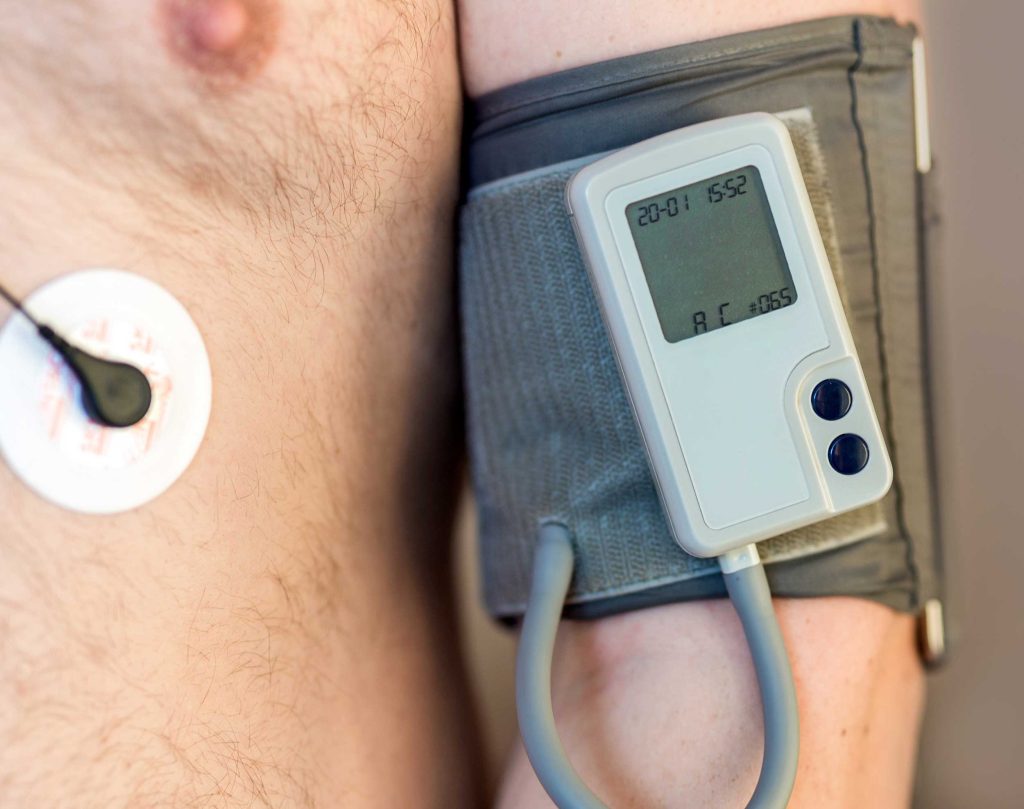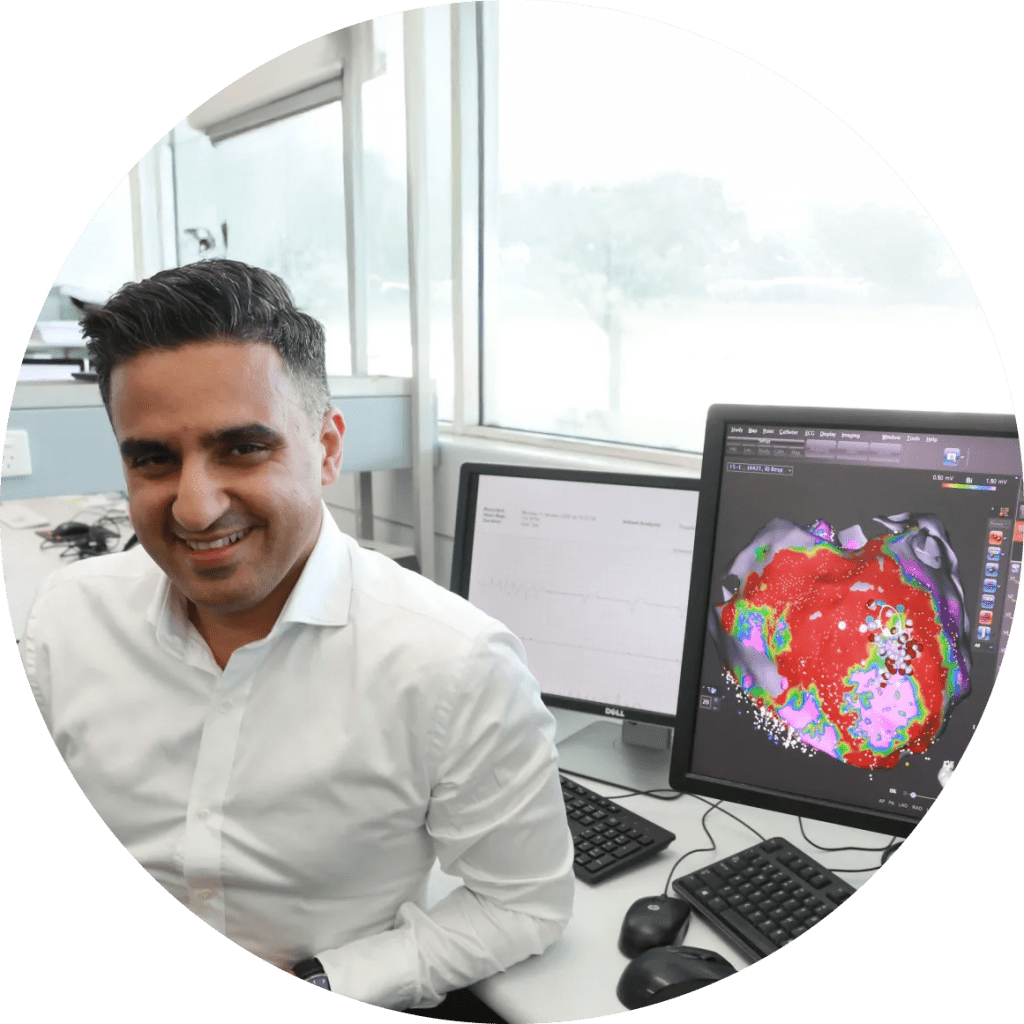Ambulatory Blood Pressure Monitoring (ABPM)

Accurate blood pressure assessment across the full rhythm of daily life.
Blood pressure fluctuates throughout the day in response to movement, stress, sleep, and other physiological changes. A single reading in the clinic may not capture the full picture. Ambulatory Blood Pressure Monitoring (ABPM) provides a more accurate and comprehensive assessment of your blood pressure by tracking it over a 24-hour period in your normal environment.
At his practice in Sydney, A/Prof Saurabh Kumar offers ABPM as part of a thorough cardiovascular assessment. As both a Cardiologist and Interventional Electrophysiologist, he uses ABPM not only to evaluate hypertension, but also to support diagnosis and risk stratification in patients with arrhythmias, syncope, and borderline blood pressure readings.
When Is ABPM Recommended?
ABPM is particularly useful in cases where standard in-clinic readings may be misleading, inconsistent, or insufficient for treatment planning. Common indications include:
Diagnosis of true hypertension
Guiding therapy in borderline or labile cases
Monitoring response to antihypertensive medication
Cardiovascular risk evaluation
Elevated blood pressure is a major risk factor for heart attack, stroke, and kidney disease. Identifying undiagnosed or sub-optimally controlled hypertension is an important step in prevention.
According to the Australian Bureau of Statistics, around one in three adults in Australia has high blood pressure, and many are unaware of it. ABPM offers a clearer, more reliable way to detect and manage this common but serious risk factor.

What ABPM Can Reveal
White Coat Hypertension
Some people experience elevated readings in medical settings due to anxiety, but have normal blood pressure in daily life. ABPM helps avoid unnecessary medication in these cases.
Masked Hypertension
Nocturnal Hypertension
Treatment-Resistant Hypertension
Variable or Labile Hypertension
Risk Stratification in Arrhythmia and Syncope
Services Offered
A/Prof Kumar offers comprehensive ABPM services with streamlined setup, expert analysis, and personalised follow-up. These include:
24-Hour Automated Blood Pressure Monitoring
Patients are fitted with a small, lightweight cuff and monitoring device that records blood pressure every 20–30 minutes during the day and hourly overnight. The process is simple, non-invasive, and well-tolerated.
Day/Night Blood Pressure Profiling
Assessment Of White Coat and Masked Hypertension
Using ABPM, A/Prof Kumar can differentiate between transient clinic-induced blood pressure elevations and true hypertension, ensuring appropriate treatment decisions.
Detection of Treatment-Resistant Hypertension
Evaluation in High-Risk Patients
Symptom Correlation for Arrhythmia and Syncope
When combined with cardiac rhythm monitoring, ABPM can help identify whether blood pressure fluctuations are contributing to symptoms such as light-headedness or fainting.
A Personalised and Preventive Approach
ABPM plays a critical role in modern cardiology, not just as a diagnostic tool but also as a guide for long-term management. With the insights gained from 24-hour monitoring, patients can avoid unnecessary medications, fine-tune existing therapies, and reduce their future cardiovascular risk with greater confidence.
At A/Prof Saurabh Kumar’s practice, each ABPM test is interpreted in the context of your broader health picture. Results are not just delivered—they are explained clearly, with a customised plan for next steps based on the latest clinical evidence.


Take Control of Your Heart Health Today.
A/Prof Saurabh Kumar brings over 15+ years of clinical expertise to the care of patients with heart rhythm disorders and general cardiac conditions. He is widely regarded within the Australian cardiology community and internationally for his depth of knowledge, collaborative style, and commitment to patient-centred care.
He holds dual roles as a Staff Specialist Cardiologist and Cardiac Electrophysiologist at Westmead Hospital and Clinical Associate Professor of Medicine at the University of Sydney. He currently serves as the Program Director for Ventricular Arrhythmias and Sudden Cardiac Death at Westmead Hospital and is the Translational Electrophysiology Lead at the Westmead Applied Research Centre, University of Sydney.